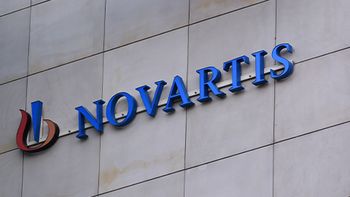
- Pharmaceutical Executive-01-17-2006
- Volume 0
- Issue 0
FDA Encourages Exploratory Human Testing
Observing drug candidates in humans early in the development process could save investigators time and money, experts say.
A guidance issued by FDA last week invited the industry to explore limited preclinical testing in humans. In response, some patient groups are criticizing the agency for encouraging companies to speed up drug development. But experts who monitor drug safety and development hailed the directive as a small, but significant, step in bringing more effective treatments to the market.
By encouraging preclinical human testing, sometimes called “Phase 0,” the agency aims to improve the development process. Phase 0 testing allows researchers to give very small amounts of the compound they are investigating to humans. The doses must be small enough that they do not have any impact on the patient and are given only once or a few times.
The purpose of these studies is to see how the molecule behaves in humans. For example, they could observe whether it binds to a target receptor or enzyme, or see how the compound is distributed throughout the body.
This type of research could prevent developers from spending the time and money to continue studying a compound that will not act as expected in humans, said Christopher-Paul Milne, assistant director of the Tufts Center for the Study of Drug Development. For example, the human body’s inability to properly absorb a compound is a common pitfall that stalls many promising compounds in clinical trials, he said. Using Phase 0, this sort of problem could be detected before heading into clinical trials.
According to FDA, fewer than 10 percent of molecules studied as potential medicines make it far enough for the manufacturers to apply for approval as a new drug.
Phase 0 testing could also help researchers with several potential drug candidates determine which one is most likely to work in humans.
Phase 0 testing should not decrease drug safety, according to Charles Bennett, professor at Northwestern University’s Feinberg School of Medicine and principal investigator of the ongoing Research on Adverse Drug-Events and Reports study, which is conducted with government funding by 25 physicians around the country.
“I don’t think that this is going to bring more unsafe products to the market,” he said.
He added that knowing more about how a compound works in humans could provide insights that help researchers maximize the potential drug’s benefits.
Experts agreed that Phase 0 testing is not an attempt to help developers cut corners.
“This is an innovation. It’s not a shortcut,” said Raymond Woosley, president of The Critical Path Institute, a non-profit research organization aimed at helping the industry speed up drug development. “It’s a means by which we can use new technology and expand our understanding of medicine.”
Drug development currently works on a one-size-fits-all model, explained Michael Rosenberg founder and chief executive officer of Health Decisions, a contract research organization.
“Our model has been broken,” Woosley said.
Phase 0 testing acknowledges that flexibility is necessary to best understand the potentials of different compounds, Rosenberg added.
If drug development continues to take so long and cost so much money, then personalized medicine will lever be possible, according to Woosley.
“We’ll need to have to have a lot more medicines to treat different people,” he said. “But if it costs a billon dollars to develop a drug, it’s not going to happen.”
Using the current system, researchers do not know if a compound they are studying works in humans until the end of a clinical trial, Rosenberg said. But a more flexible approach, such as Phase 0 testing, allows researchers to make decisions at an earlier point.
“The sooner you can identify problems, the better, “ he said, adding that the industry must embrace the full extent of available technology to improve drug development.
But Linda Bentley, an attorney at Mintz Levin, who works in health and biotechnology, is skeptical that Phase 0 testing will produce the desired result. Success in limited human exposure does not mean that the drug candidate will be successful in later phase trials, when most costs are incurred, she said. She added that Phase 0 testing would use healthy individuals, so it would not offer any insight on how the compound will behave in actual patients.
Milne added that at first, embracing Phase 0 testing could add time and costs to the development process.
“But if the predictive value is good, that will have paid for itself a few times over,” he said.
Bentley believes that companies will try to adopt the practices outlined by FDA, but said that the success of the program lies in how well this type of data is received when presented to the agency divisions in charge of different therapy types.
Articles in this issue
almost 20 years ago
Understanding Demand, Not Just Supply, Key to Solving Flu Vaccine Shortagesalmost 20 years ago
Pfizer Adds Radio Frequency Identification Tags to ViagraNewsletter
Lead with insight with the Pharmaceutical Executive newsletter, featuring strategic analysis, leadership trends, and market intelligence for biopharma decision-makers.




